フィールド日記
2024年06月
2024.06.28
ヤブジラミ
ヤブジラミが咲いています。セリ科の越年草で、道端や藪でよく見られます。和名は藪に生え、果実に先端がかぎ状に曲がった刺毛が密にあり、動物やヒトの服にくっつくことに由来します。
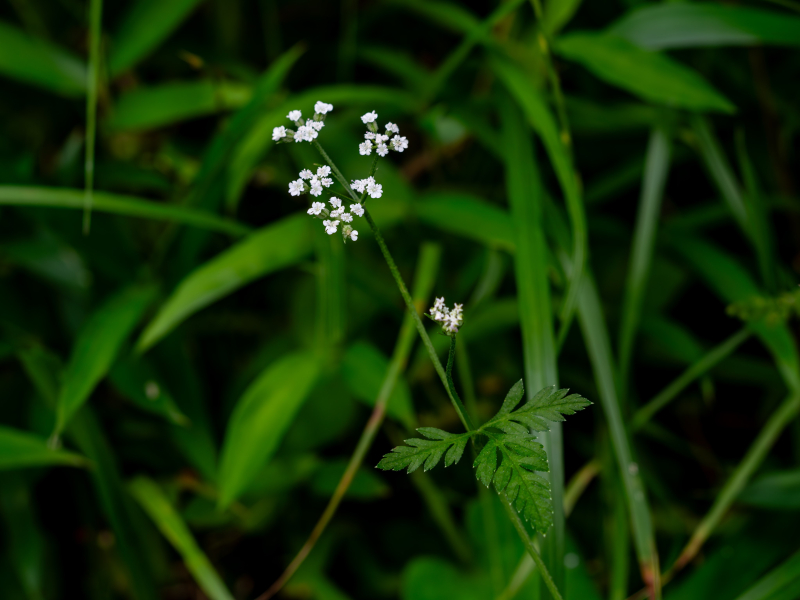
2024.06.25
ホタルブクロ
ホタルブクロが咲いています。キキョウ科の多年草で、釣鐘型の花冠が特徴です。和名は、子どもたちが、ホタルを花冠の中に入れて遊んだことに由来するといわれています。
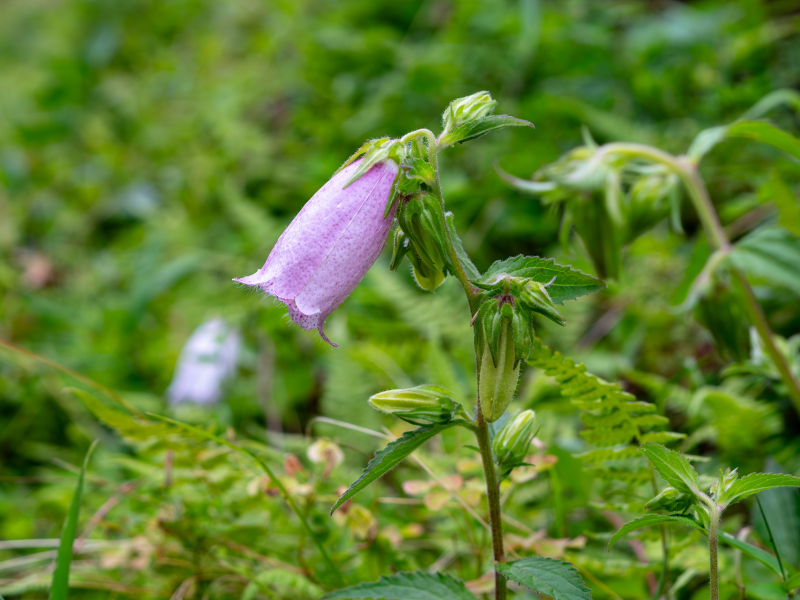
2024.06.21
アカメガシワ
アカメガシワが咲いています。伐採跡地や崩落地などにいち早くみられる落葉高木です。雌雄異株で、写真は雌花です。和名の「アカメ」は、新芽が赤いことに由来します。
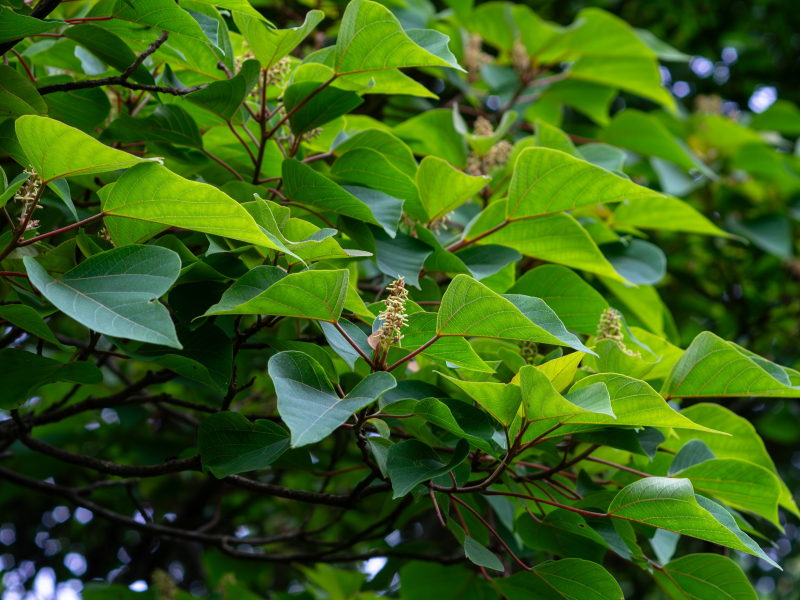
"Akame-Gashiwa (アカメガシワ)" trees are in bloom. They are the tall trees growing in logging sites and landslide areas. They are divided into two groups: the male trees and the female trees. The one in this photo is a female tree. "Akame (アカメ)" in its name indicates that their sprouts are red.
2024.06.18
ヨツバムグラ
ヨツバムグラが咲いています。日当たりの良い草地や明るい林内などに見られる多年草です。花は小さくあまり目立ちませんが、キャンパス内ではさまざまな場所で見ることができます。和名のヨツバは葉が4枚輪生することに由来します。
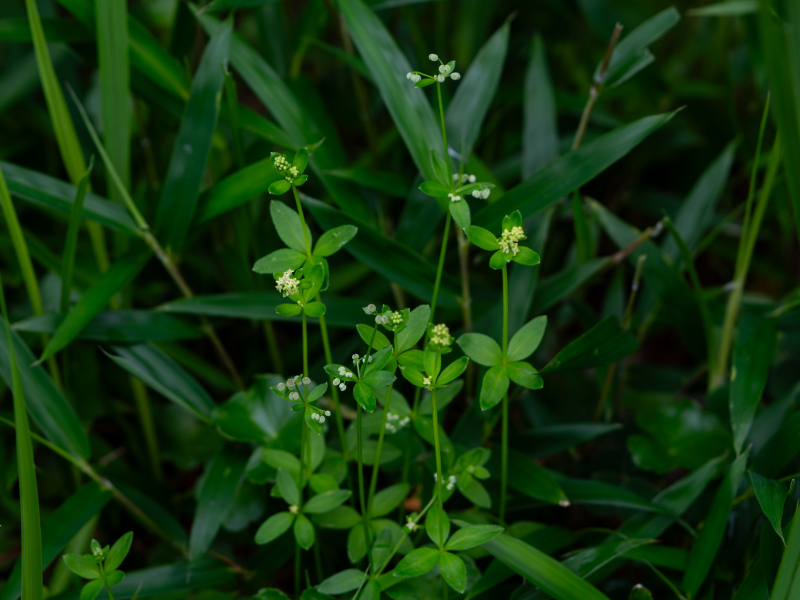
"Yotsuba-Mugura" plants are in bloom. They are perennial plants growing in sunny grass fields and forests. They are not so noticeable because their flowers are small, but they grow in many places on our campus. "Yotsuba" in its name means "four leaves" and it comes from the fact that they have four verticillate leaves.
2024.06.14
ノアザミ
ノアザミが咲いています。草原に生えるアザミの仲間で、春から咲き始めます。白い毛が密に生え、頭花は上向きに咲きます。キャンパス内ではススキ野原でよく見られます。
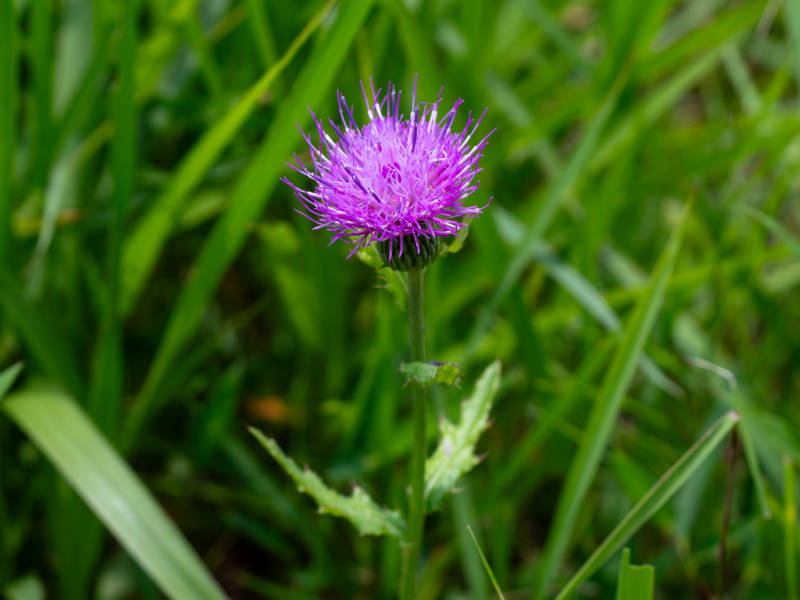
2024.06.11
ヤブムラサキ
ヤブムラサキが咲いています。庭木としてよく植栽されるムラサキシキブのなかまです。全体に星状毛が多いのが特徴です。秋に美しい紫色の果実をつけます。
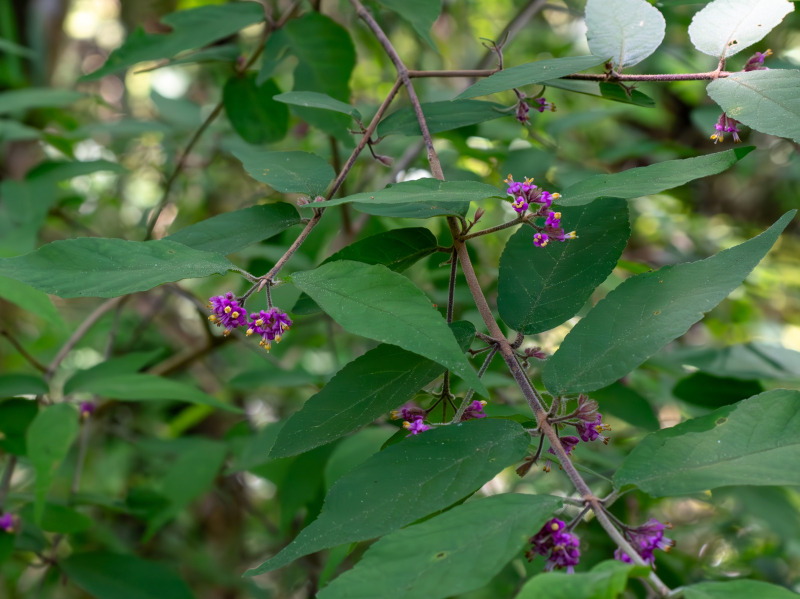
2024.06.07
ヒメシャラ
ヒメシャラが咲いています。山地に見られる落葉高木ですが、なめらかな赤褐色の樹皮も美しく、庭木としてよく植えられています。キャンパス内にも複数のヒメシャラが植栽されていますが、駐車場近くの木が一番大きく、多くの花をつけています。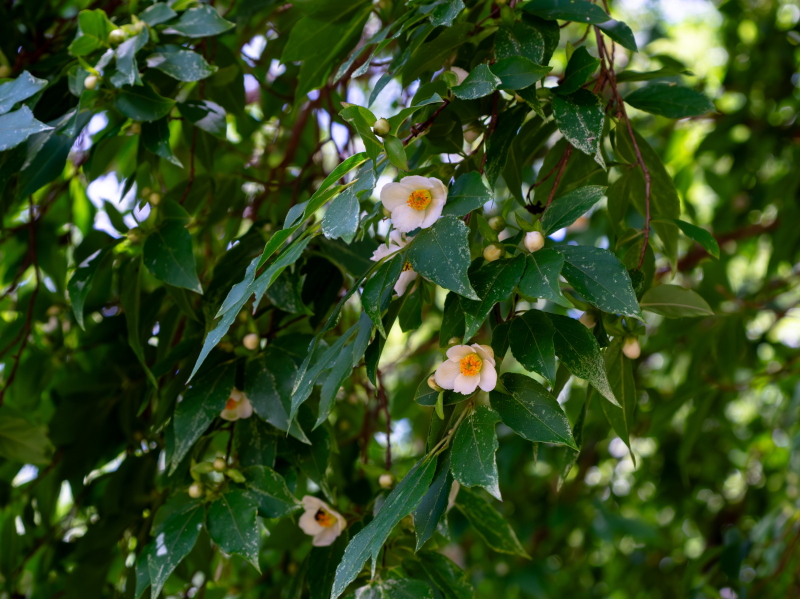
2024.06.04
セッカニワゼキショウ
セッカニワゼキショウが咲いています。ニワゼキショウは北アメリカ原産の帰化植物で、よく芝生の中に混ざって咲いています。写真のように純白色の花を咲かせるものを特にセッカニワゼキショウと呼ぶことがあります。和名のセッカは雪花を意味し、雪の結晶のように見える純白色の花に由来します。
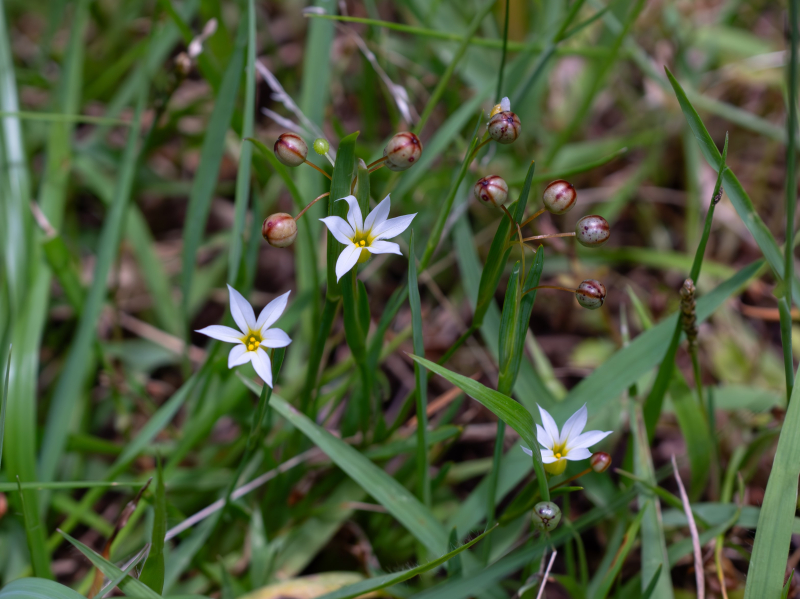
"Sekka-Niwazekishou (セッカニワゼキショウ)" plants are in bloom. "Niwazekishou (ニワゼキショウ)" plants originally came from North America and often grow in lawns. The ones that bloom white flowers seen in the photo are especially called "Sekka-Niwazekishou." "Sekka (セッカ)" means "snow flower" and comes from the fact that the flower looks like a snowflake.
- 1 / 1

















